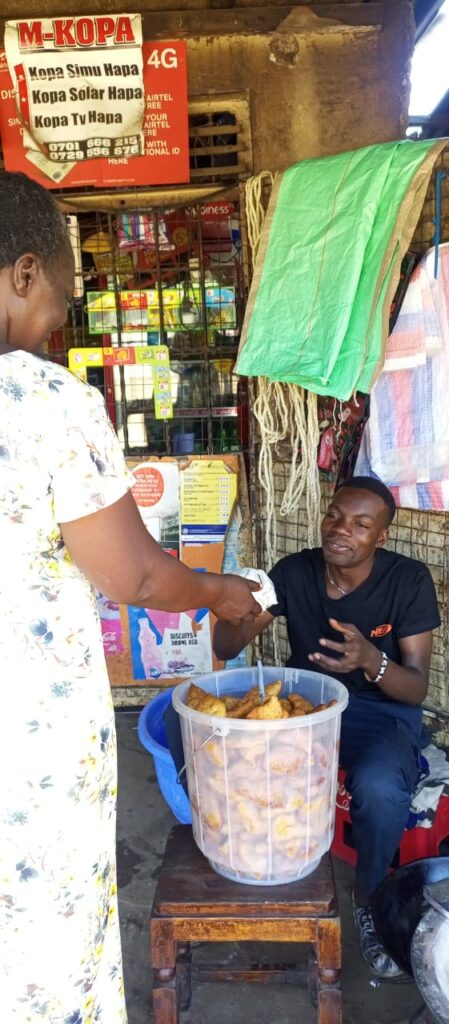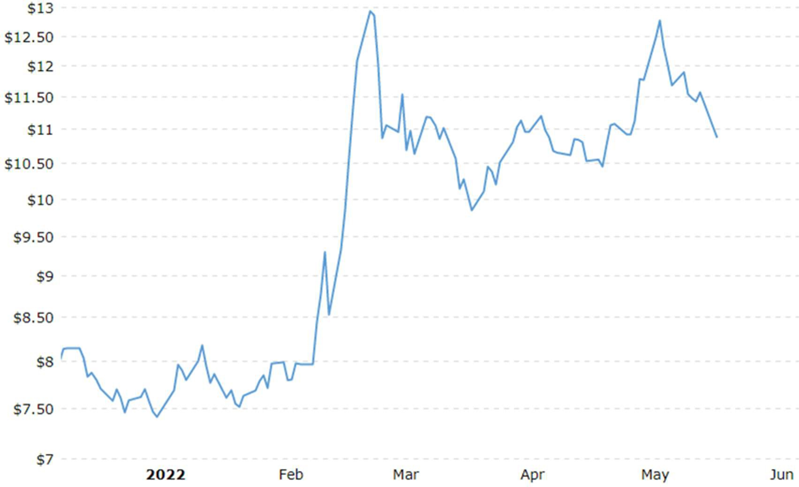In 2007, Eunice Atieno ventured into mandazi business at her stall located in Nyalenda, along Ring road.
The business paid her bills, covering basic needs like shelter, food and clothing, as well as other secondary needs she needed to make her life aesthetic.
Today, Ms Atieno is contemplating closing the business and venturing into other viable businesses.
This business is nolonger what it used to be. I barely survive, and I am soon getting out of it
Eunice Atieno
She will not be the first one to abandon the venture she once adored. Several other people in her neighbourhood have called it quit.
“This business is nolonger what it used to be. I barely survive, and I am soon getting out of it,” she said.
When Lake Region Bulletin visited Atieno at her stall, her son Kevin Okoth was assisting her with sales.
She said when she began the business, she could cook one and a half bales of flour per day. This translates to 36 kilos of wheat flour.
“The rains began beating us three years ago, when the price of wheat flour began to shoot uncontrollably,” she said.

High wheat prices
Three years ago, she says she bought a bale of wheat flour (24 kilos) at between Sh1, 200 and Sh1, 500. This now goes for over Sh2, 500.
This jump in the price of wheat flour has hit Atieno hard. This has been coupled with the hike in the prices of other material used in making mandazi, such as cooking oil, sugar, and baking powder.
“A few years ago a kilo of sugar was going for Sh100, now it is over Sh230. The small baking powder which was Sh16 is now Sh35. Cooking oil is now worse,” she says.
Due to the hard economic times, sales went down, and today Atieno only cooks six kilos of wheat flour.
A few months ago she attempted to hike the price of mandazi from Sh5 to Sh10. It didn’t work.
“No one was buying mandazi. And even after reducing the price back to Sh5, the sales have gone down,” she said.
Atieno now has to contend with reduced profit margins, and sometimes loses, as the cost of doing business continue to hike while people’s buying power die.
Job losses
A short distance from her stall is Joseph Oduor who has been selling chapati for the past three years.
Just like Atieno, his business is fast dwindling. Two years ago he was consuming two bales of wheat flour per day (48 kilos). He had two young men helping him with the work.
But today, he is alone, after relieving the helpers due to low sales and reduced profit margins due to the high cost of production.
I know a few friends who abandoned their chapati businesses, and the way things are unfolding, I do not know my fate
Joseph Oduor
“These days I consume less than 10 kilos of wheat flour per day. The cost of everything has gone up,” he said.
“I know a few friends who abandoned their chapati businesses, and the way things are unfolding, I do not know my fate,” he added.
The Centre for Science and Environment (CSE) a report titled ‘State of Africa’s Environment 2013’ and published in Down to Earth Magazine suggests that the phenomenon faced by small scale traders like Atieno and Oduor is partly contributed by the ongoing Russia-Ukrain war.
The two worrying countries are some of the leading sources of wheat consumed across the globe.
In east Africa, where wheat and wheat products accounted for a third of the average cereal consumption, 90 per cent of the wheat imports came from Russia and Ukraine, as per UN’s World Food Programme (WPF)
State of Africa’s Environment 2013’
“The Russia-Ukraine war has spiked food prices threatening reversal of decades of progress in poverty alleviation,” the report read in part.
According to the report, Russia is the world’s largest wheat exporter while Ukraine is sixth on the list, and that together, the two warring countries produced 12 per cent of all food calories traded globally (in January 2022); controlled 29 per cent of global wheat exports, 19 per cent of maize exports, and 78 per cent of sunflower oil exports,” the report read.
“In east Africa, where wheat and wheat products accounted for a third of the average cereal consumption, 90 per cent of the wheat imports came from Russia and Ukraine, as per UN’s World Food Programme (WPF),” read the report.

Kenya’s wheat demand
Kenya Institute for Public Policy Research and Analysis (KIPPRA) reports that Kenya has a wheat consumption of about 900,000 tonnes per year, but only produces approximately 350,000 tonnes.
This leaves the country at a huge deficit which can only be filled by imports.
KIPPRA notes that Kenya’s major wheat supplier is Russia, accounting for 31 per cent of total wheat imports in 2020/2021.
Other sources of wheat in Kenya are; Argentina (29 per cent), Germany (11 per cent), Poland and Canada (5 per cent), Latvia (4.8 per cent), Ukraine (4.2 per cent), Australia (2.8 per cent), Estonia (2.6 per cent), Lithuania (1.8 per cent) and Czech Republic (1.6 per cent).

KIPPRA opines that a trade disruption occasioned by the Russia-Ukraine conflict portends a further increase in the trajectory of wheat prices, hence a likelihood for an increase in retail prices of wheat-based products.
Unfortunately, just like many Kenyans, Atieno and Oduor are not aware of the dynamics in the wheat business, and are soon joining the statistics of those abandoning businesses dealing in wheat products.
“Leaders and politicians have been giving us hope that the situation will be okay son, but it keeps getting worse,” says Oduor.
Kenya not alone in the ditch
But according to the ‘State of Africa’s Environment 2013’, Kenya is not alone in this ditch. The report says Egypt, for instance, depended on Ukraine and Russia for 60 per cent of its food imports. Its food inflation rose to 26 per cent in April 2022.
It says, Angola, a country that does not produce wheat traditionally but consumes 0.65 million tonnes of it annually, met 30 per cent of its demands from Russia Ukraine.

With the war curbing supply, wheat price at the consumer level had increased by 40 per cent in just a few weeks, according to the Association of Wheat Flour Producers of Angola.
The report further points out that Lebanon, a country that had not registered growth in the last four years preceding 2022, sourced up to 25 per cent of its average calorie consumption from wheat and sunflower oil imported from Russia-Ukraine. Up to 90 per cent of its wheat demand was met via imports from Russia and Ukraine.
CSE, founded in 1980, is a public interest research and advocacy organisation based in New Delhi. CSE researches into, lobbies for and communicates the urgency of development that is both sustainable and equitable.
